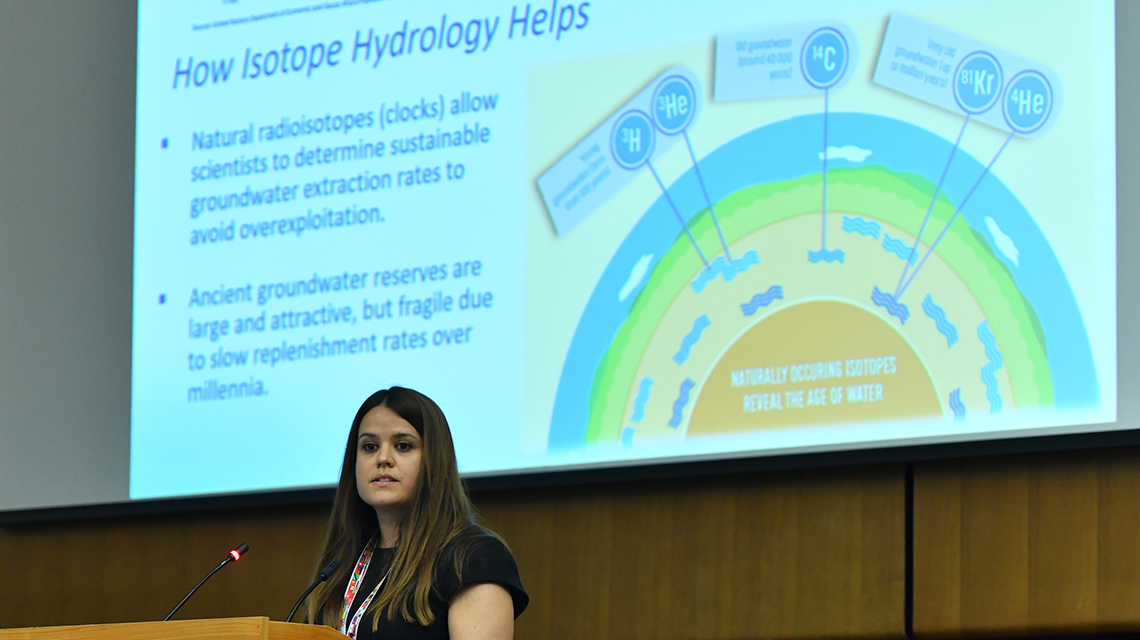At the Symposium, water experts looked at new isotope techniques that could help address widespread pollution problems. These include new analytical methods for nitrogen, phosphorus and boron isotopes to address nutrient pollution issues by fertilizers, manure and other sources.
Scientists talked about emerging isotope techniques with lasers and atom trap analysis to increasingly use long lived non-reactive argon and krypton noble gas isotopes to assess replenishment over hundreds to million-year timescales.
“Being here and hearing what state-of-the-art tools we can use and what challenges some scientists have is useful for spurring new ideas,” said Tricia Stadnyk, Associate Professor of water resources engineering at the University of Manitoba in Canada and keynote speaker at the Symposium. “It’s useful for scientists to know what data can do and to see the greater picture: the application of their results.”
They also discussed the importance of big data — from remote sensing vigilance like GRACE satellite data, to the IAEA’s Global Network of Isotopes in Precipitation (GNIP) — which allow for new, more advanced isotope-enabled water balance models to help scientists predict how global rain water distribution and aquifer replenishment rates will change over time due to land use, agriculture and climate change. Radioisotopes such as tritium and helium were part of the discussion too, since these can increasingly help map areas of the world’s landscapes and watersheds to ensure the effective protection of the most vulnerable aquifers from contamination.
An outreach event called “Water, Water Everywhere? Helping IAEA Member States with Water Resources and Water Security” took place on the sidelines of the Symposium. IAEA experts discussed the various ways nuclear science and technology can help advance water management, from improving water availability, optimizing efficiency of water use, treating wastewater in an environment-friendly way to monitoring marine pollution.

